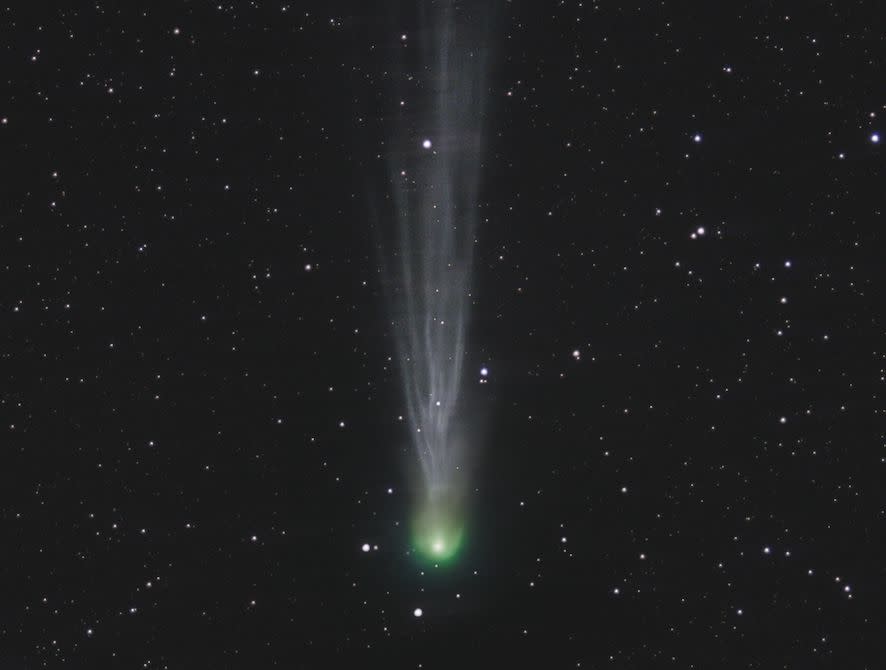On April 8 We Will Experience A Total Solar Eclipse, But It Won't Be The Only Celestial Wonder That Day
The 'Devil Comet' could become visible that day.

Thomas Roell
When the sky darkens during the total solar eclipse on April 8, a celestial sideshow could pop into view. The "Devil Comet," otherwise known as 12P/Pons-Brooks, may be visible about two fists' distance from the sun, according to TIME.
The Devil Comet is named for its forked tail that flares up when the comet bursts from the heat of the sun. The comet glows green and red with a long, icy blue tail. It's looked like a smudge on the early evening sky for awhile now, visible with binoculars or a telescope. The comet takes 71 years to orbit around the sun and will reach its perihelion, or closest point to the sun, on April 21, according to a report from NPR. (The last time this happened was in 1954).
Of course, most of us will be focusing our attention towards the sun during those three or four minutes that it is obscured by the moon. The total solar eclipse will begin in Texas about 1:30 p.m. CDT and cross into Maine around 3:30 p.m. EDT.
And there will be plenty of time to look at the comet later. The Devil Comet won't reach its closest point to Earth until June 2, though as TIME pointed out, it still will be 144 million miles away—much further from us than the sun. There's no danger of it getting anywhere near our planet, but the comet will be faintly visible to the naked eye as it gets closer.
For more Southern Living news, make sure to sign up for our newsletter!
Read the original article on Southern Living.

